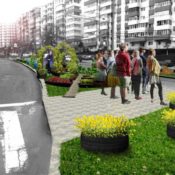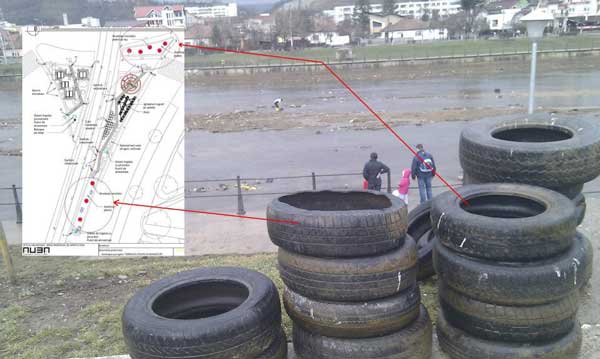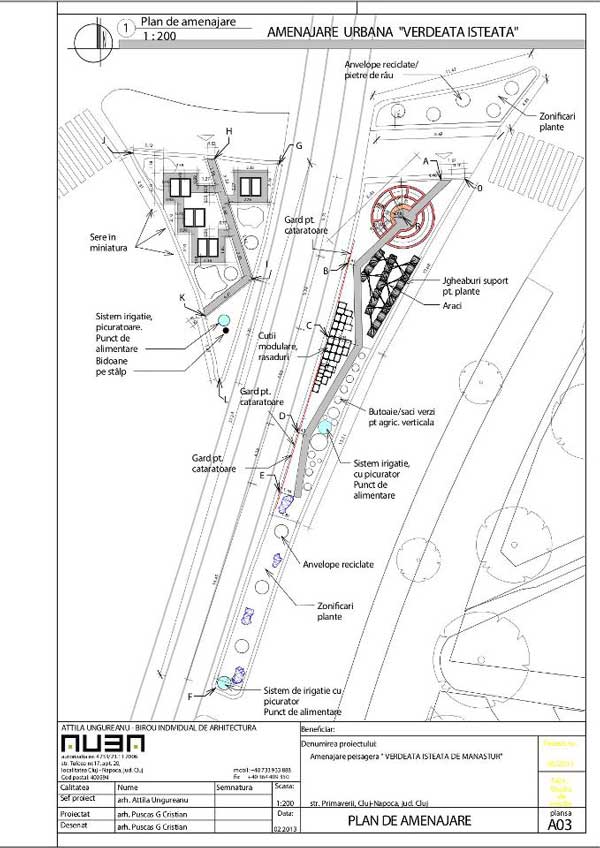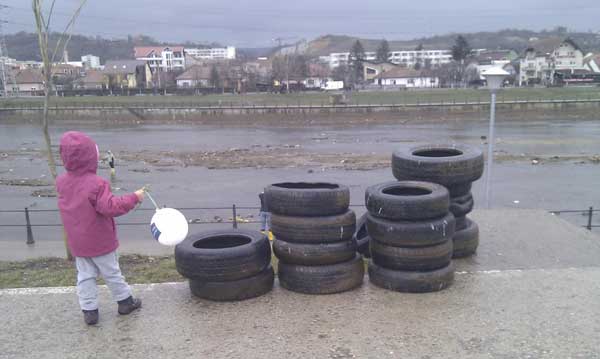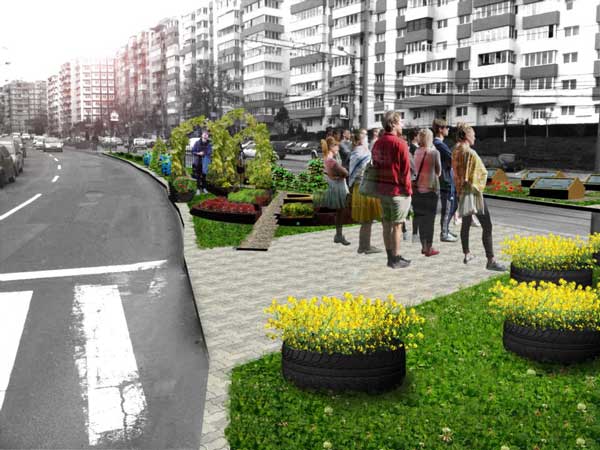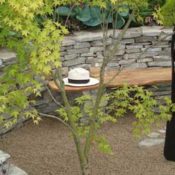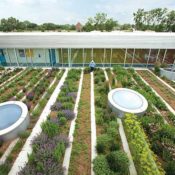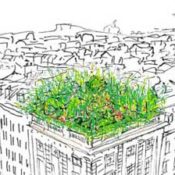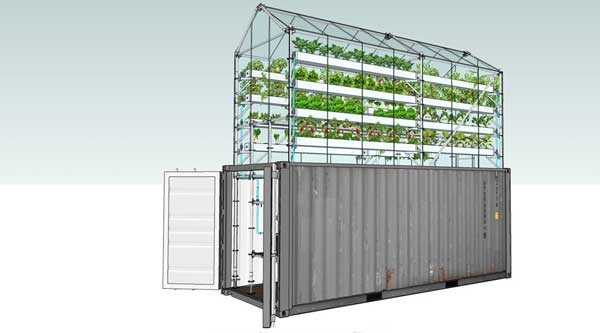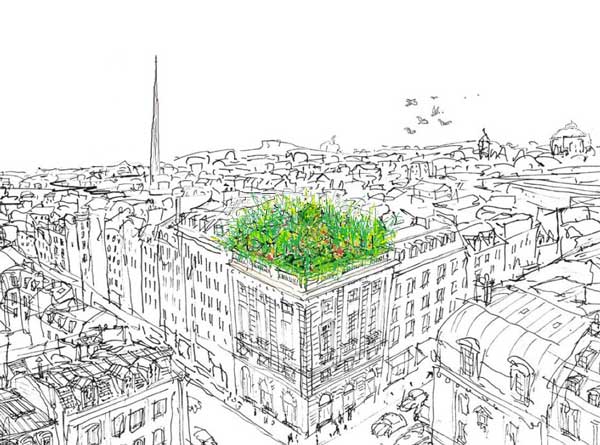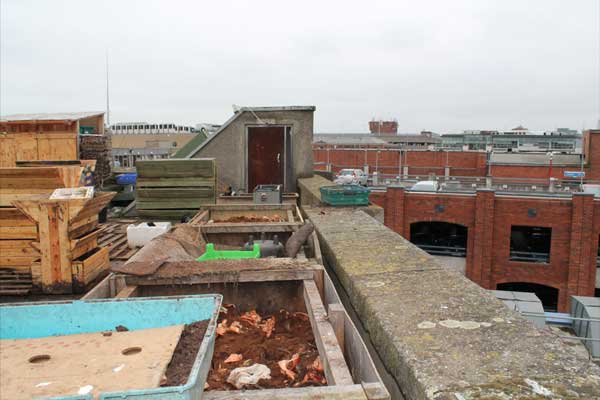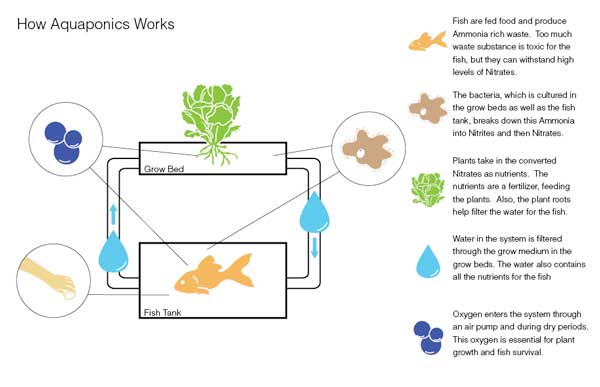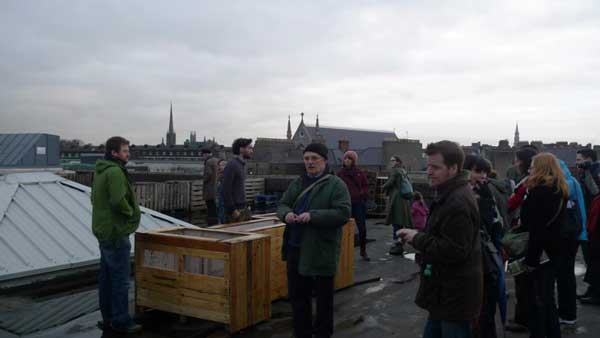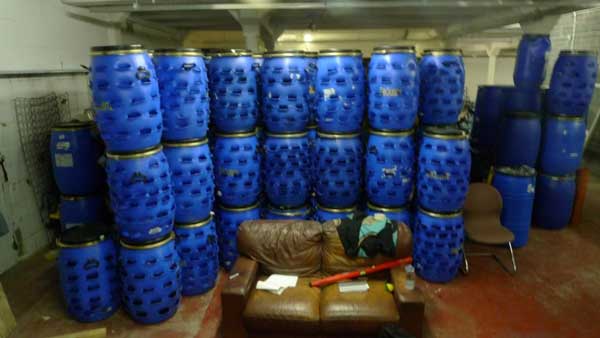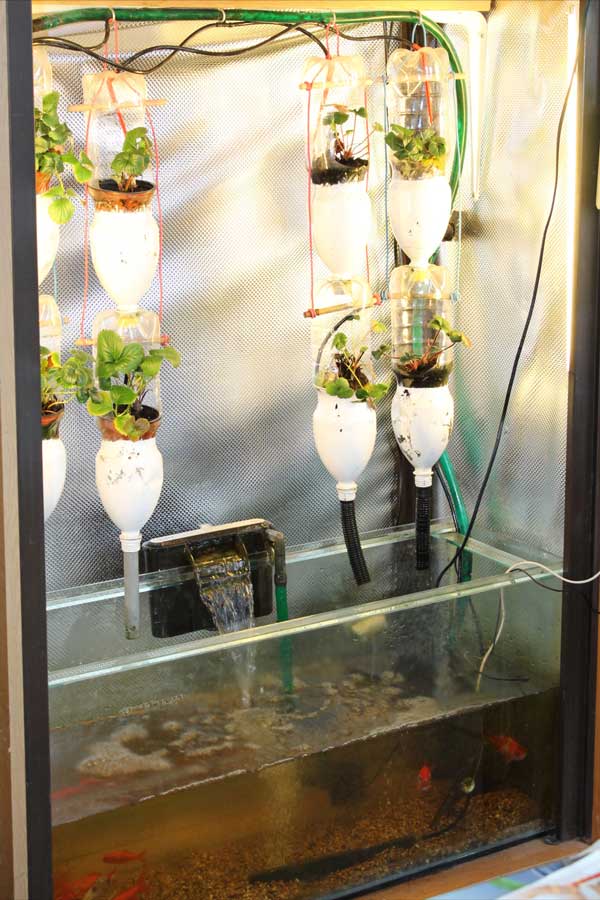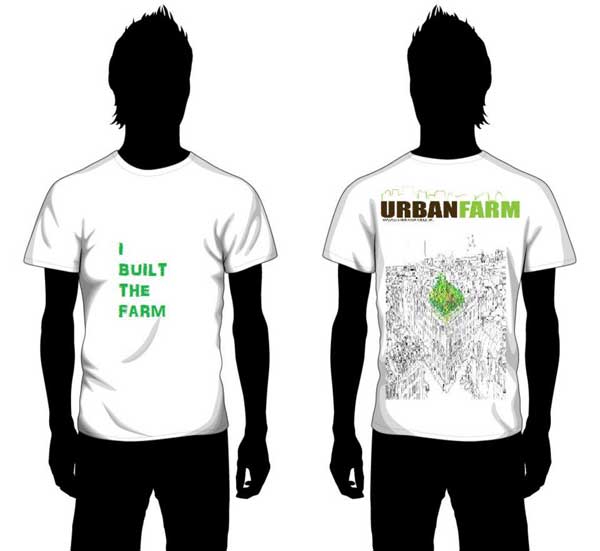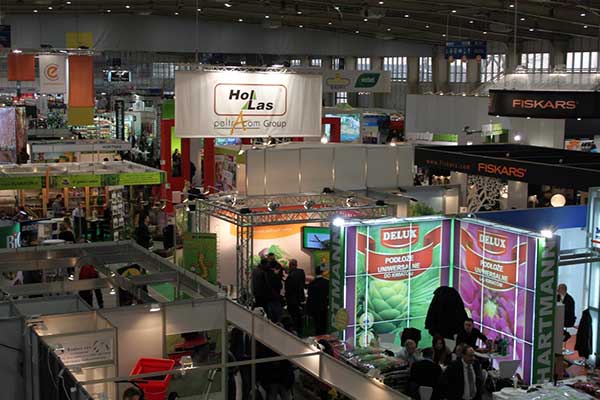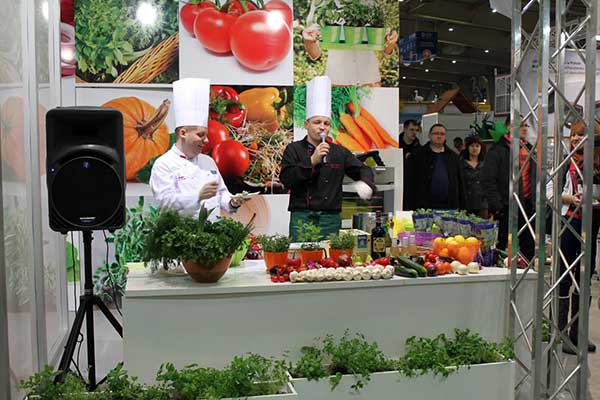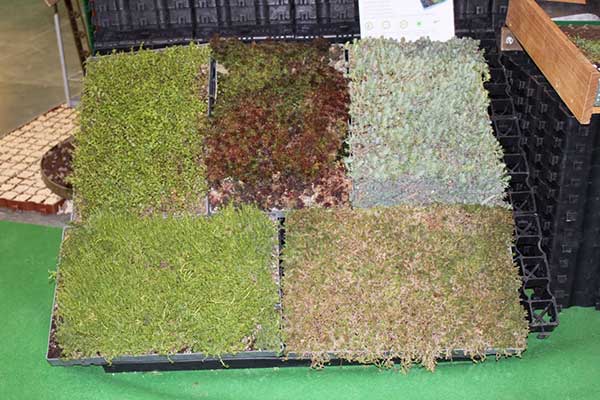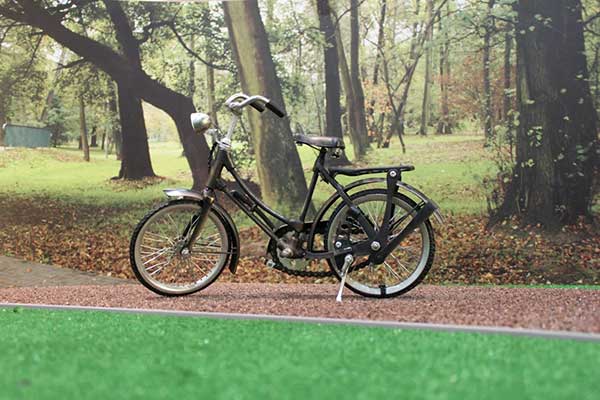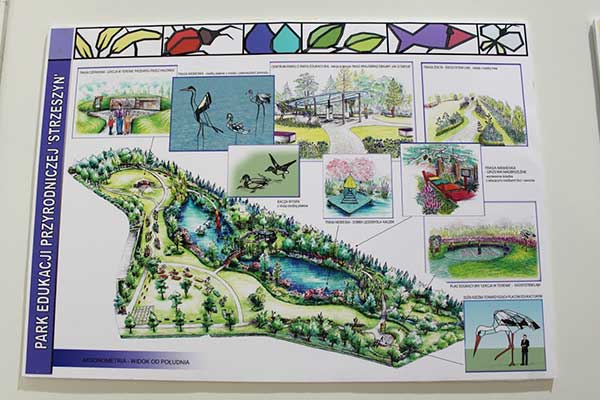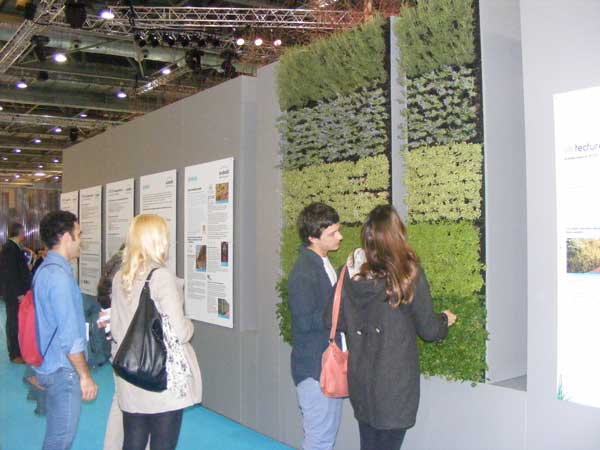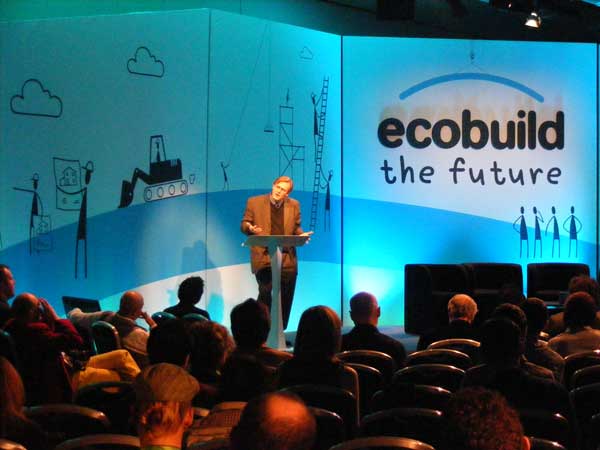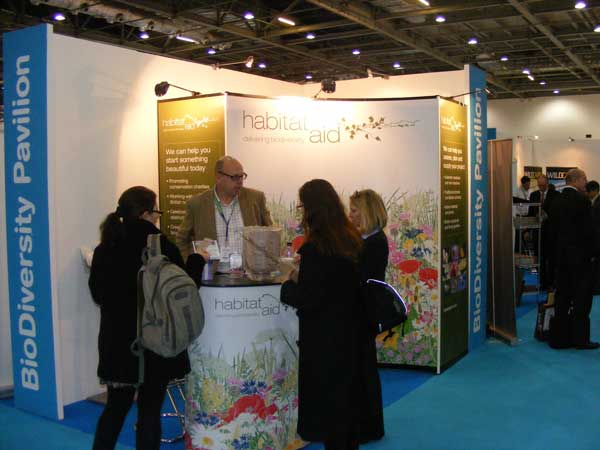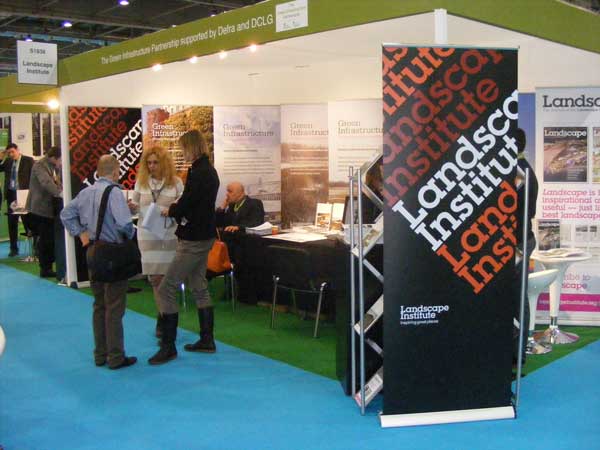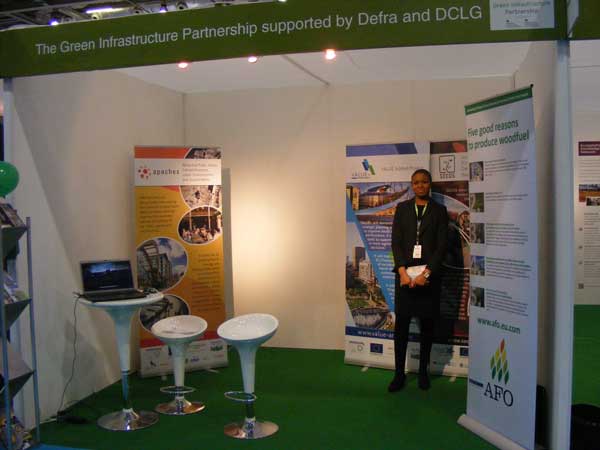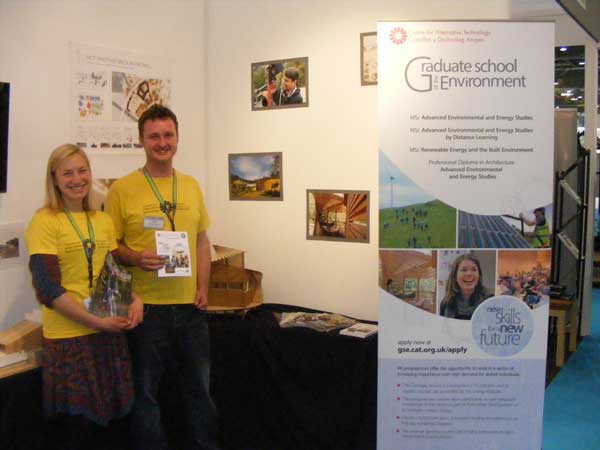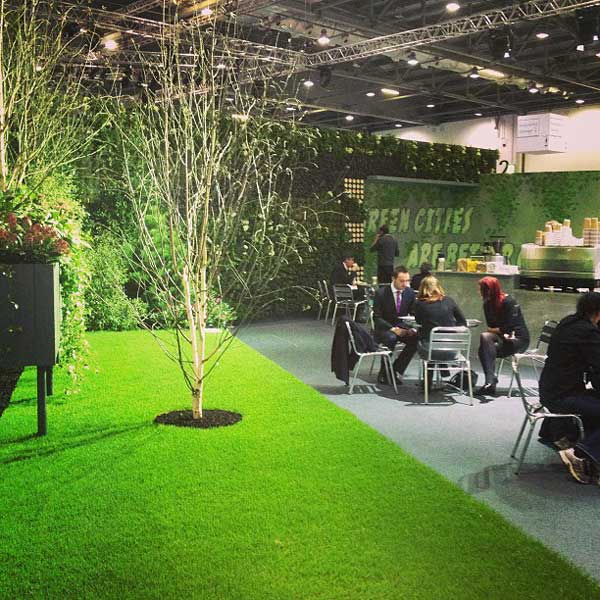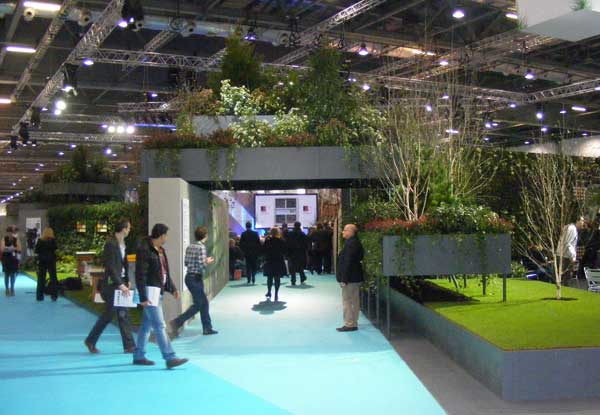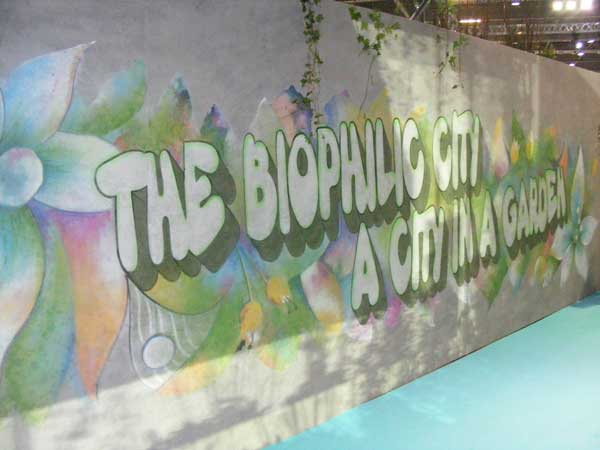Author: Land8: Landscape Architects Network
Verdeata Isteata de Manastur Interview
People are returning to nature and to the principles of ecology, especially through small-scale projects that reorganize urban spaces that lack greenery. Urban gardens and green spaces are the most popular of these projects, so we decided to talk to representatives of an association from Cluj-Napoca, Romania, which has started developing urban gardens. “Verdeata Isteata`” brings a new perspective on the disused city green spaces and engages the community in embracing a new perspective on ecology and urban gardening.
How did you get this idea for an urban garden in such an urban neighborhood like Manastur? We were looking for quite a while for ways of expressing our ideas in the urban landscape of Cluj-Napoca. We took the local authorities’ program “Adopt a Green Space” and turned it into a platform for expressing our alternative ideas for developing a green space in the city through specific urban gardening techniques. Out of a list of 40 green spaces, we chose this one because it has a high level of visibility, high traffic, no previous development, and a high grade for passing on a message. In the context of a highly urbanized Manastur, with a predominantly uniformed and lacking personality, an urban garden would diversify the landscape, bringing a fresh note to the city image. How did the recycling activity on the Somes River go? How did the idea for upcycling come into use for the urban garden? The idea came at the beginning of the project, recycling being a great necessity in the urban context. Seeing the river every day, we noticed the high amount of rubbish that gets dumped in the river. This led to the idea that it can be an efficient source of materials for the fixtures in our garden. We chose an unusual way of promoting a public recycling event by organizing a fishing contest. The objective of the contest was to collect 20 tires from the riverbed, which we previously identified. The secondary objective was to sensitize our fellow citizens to the necessity of cleaning the leisure area around the “Horia Demian” sports venue, situated near the river. Unfortunately, with the exception of the volunteers involved in the project, the local people didn’t offer to help. What is the profile of your garden and what elements will it have? Describe it for us. The social and educational program extends to a period of three years, with this initial site of 206 square meters being cut up in three triangles with intense circulation. Access to the site will be by a path going in a zigzag pattern, each distinct area having urban agricultural fixtures. We tried to give an ascending aspect to the extremities of the site going to the middle, slightly higher ground. In the west triangle, we tried to replicate the image of a mini-city in the form of mini-greenhouses for seedlings. An interesting trait of the project is the drip irrigation system, which is a first in the city’s green spaces. We will practice urban gardening with a double purpose: practical and aesthetical. How is the project financed and who are the participants? When and how will it be implemented? This is an educational program, which addressed the social message of defining the community in Manastur. The entire project is based on voluntary work and the principles of recycling. We are an open group; anyone who is dedicated to the values that brought us together can join the association. The project is in the course of being implemented and its accountability to the community is more than monitoring and maintaining the site, but going as far as involving people through interactive events. The inauguration of the project will take place around the Easter holidays. What effect do you presume it will have on the local community? Such projects are more and more popular. Why do you think they are important? The desired effect is to create awareness and open up the community to a healthier and more active lifestyle. We are dealing with a project that gives people a public space initially insignificant and unheeded, while calling out the community to take responsibility for it. Because there is no precedent in creating such projects in Romania, Verdeata Isteata can be considered a pioneer in a new era in which “the earth does not belong to the people, but the people are those who belong to the earth.” Is there a future for Verdeata Isteata? Will the projects extend to other areas of Cluj? Based on the high interest already manifested in this project, we expect things will not stop here. We have already identified other areas targeted for such projects, such an an area of the Canalul Morii corridor and the roof of the city’s old brush factory. The impact was felt in other cities like Lasi and Timisoara in Romania, so we can assume that it is possible to spread these kinds of projects nationwide. Give a short description of your association. Will you undertake other types of projects in the future? What is the main purpose of your activity? We are an informal group, open to all those who have common interests with us. We are talking about a community that grows organically and is based on ecological principles, among which we mention the principle of open resource, the recycling and recovery of resources and that of permaculture. Although in our informal group there is a great diversity of interests and activities, some of us have organized a work team specialized in urban gardens.” “We are architect Gelu Cristian Puscas, landscape engineer Oana Burla, landscape engineer Madalina Les, Paula Tripon and Camelia Maria Poliec, who are students in landscape architecture. We all promote these concepts because we want someday to see an urban lifestyle in harmony with the natural environment.” I once found a quote that said that “progress can only be made by voluntary work” and that is why such small-scale and slightly out-of-the-box projects are so important for the eco movements. This is the time to change the face of our cities and combine our technology and modern lifestyle with healthy green spots and urban gardening or agriculture. Projects like Verdeata Isteata need to become more widespread and are in need of more publicity, especially from a small-scale, community involvement perspective. Interview conducted by Oana Anghelache Verdeata Isteata Enjoy what you’ve read! Support us and pick up one of our awesome T-shirts and hoodies today, Click the linkDragons head, snakes tail – A Warning to Landscape Architecture Students
In Pali, the term ‘Vijjacarana’ means the balance and use of knowledge and practice. Buddhists use this term to acknowledge the fact that the individual is responsible for his journey and that simply being well versed in the Dharma is only part of it. Without practice, knowledge can only become stagnant. Another term from the East that also insinuates this is “dragons head, snakes tail”. This evokes the image of one full of knowledge (the dragon’s head) without the body to balance the head (the snake’s tail).
A Warning to Landscape Architecture Students
Although survivors of the architectural industry collapse in the early 1990s insist that it was worse than proclaimed, there is little
doubt that those graduating from design professions do so with a little trepidation. Since the Global Financial Crisis, the industry has taken a downturn in revenue, which has resulted in the disappearance of graduate positions. The graduate is in the position of being economically unsustainable to a practice until he has the knowledge to return a profit for his space in the office. Experienced staff members who train and watch over a graduate also lose profitability for the practice by spending time with the graduate instead of creating income. Still, some practices do take on graduates as a gesture of development for the individual and the industry. Graduates can provide fresh blood and new skills to a company, which does sweeten the deal; however, it would be up to an individual practice to ascertain the value of this deal. This also creates a situation where student jobs and internships are also harder to find. Sure, the intern might volunteer her time for free, but experienced staff members are still needed to manage the intern and resources, like space and computers. As financial purses tighten, so do the resources to accommodate interns. Traditionally, academia taught the dragon’s head; the dragon’s body began developing through student jobs and internships. These days, it can be frustrating to sit in a professional practice class and hear a professional — who may have only graduated a couple of years back — talk about the student job that led to the graduate job that led to his present career, when emails from current students are never returned. The idea used to be that academia could be free of practice to allow students to develop their minds free of the constraints of the body. When they graduate, the body may be developed enough to allow the graduate to be less of a burden on a practice. The trades know this; however, a trade rarely has such a high conceptual component allowing the apprentice to spend more time developing the body so that they are economically sustainable as they graduate. Academia is also in a difficult position. To sustain quality of education, academics should be paid properly and class numbers should be kept to a minimum. Computers and technology are expensive, and universities are run as businesses. Your fees go beyond your education. I would personally argue that academia is not practical enough, and that by not providing students with the skills they need for the work force by concise education on various construction methods and industry standards, they are crippling our chances to enter the industry. However, the number of opportunities would potentially be the same as they are now — and so will the competition for those places. The reality is that the future of this profession is in the hands of the students ,who have a say in their own destiny from the time they begin studying. In these tight times, it is often who you know that matters more than what you know, and the ability to network has never been more important. There are some students — and you will know if you are one of them — who will be looked after by the academics. They have the correct framing, work hard, and basically fit in. They will be the first to receive the email about a new position or be accepted into a teaching position. To survive, students must honestly look at the skills they have and how to use them within the network they have. It is important to practice actualizing ideas as much as developing theories. Start a club; universities have the cash for this. Don’t target that club to your own department; target it to those who may be involved in development or planning so you are the only landscape architect tapped into the source of potential work later. The best thing I did in my last two years was to organize two large art shows. The shows lost me many points and favors at school, but allowed me to meet some people who are now great mentors and have helped me get my foot on the first rung of the industry. It is up to you to do this. In this world, credibility is everything and, in my biased opinion, more important than your ability for conceptual thought (unless you are hoping to work in academia). Plan your education inside and outside university and set goals, because once you graduate with a big head and a small body, it will be much harder to begin practicing, especially if the industry remains the way it is today. Good luck. Article written by Stuart BeekmeyerSCD – Studying Landscape Architecture
SCD – Studying Landscape Architecture – Landscape architecture is slowly gathering the status that the profession of architecture has achieved around the world. And with more and more universities and colleges offering landscape architecture courses, we want to see what landscape architecture offers that is so special. What is its context? What is the educational perspective on it?

An aerial shot of the meadow labyrinth created for Bloom 2009. The students wanted to create a landscape intervention with no money. The labyrinth concept was intended to provide people with time to reflect as individuals and then to share these experiences with friends and family in the mown pod spaces. We were all initially freaked when kids started trampling all over it, but soon realized that this interaction created its own beautiful pattern.
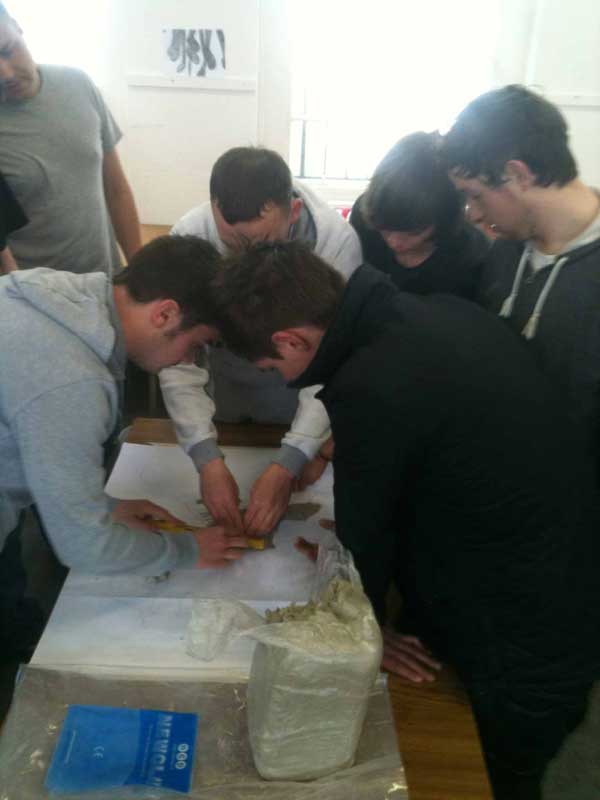
Learning to collaborate is a vital and often underrepresented skill in design. This shot shows a group of students working collaboratively to create a landform representation of a project site.
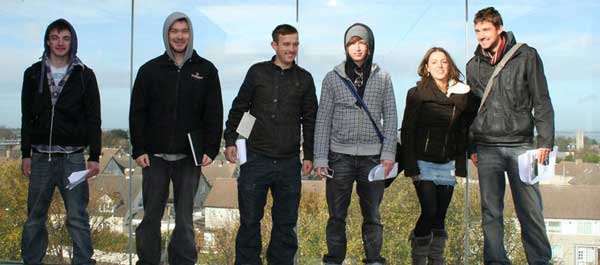
A good design education is built upon collaboration, sharing, interaction, friendship, socializing, and mutual support. The students that achieve the most are those that understand this early on.
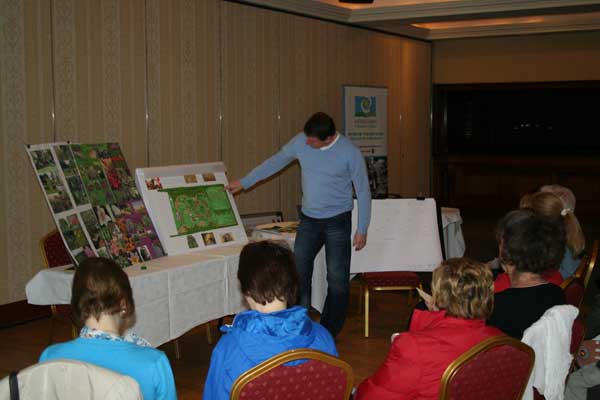
A student presenting ideas for community gardens in and around the border town of Monaghan. Funding for the project was provided as part of a peace process initiative, and they are currently being constructed.
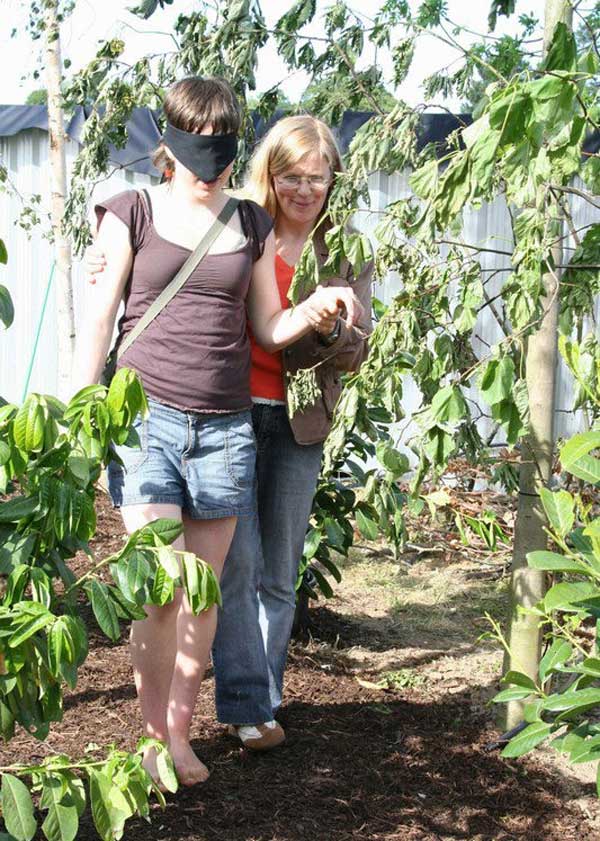
A student shares The Garden That Nobody Saw experience with a bloom attendee. The garden was a sensory experience that explored the experience of Irish landscape and seasons in the absence of sight. Such sensory work helps students to develop a greater understanding of landscape perception.
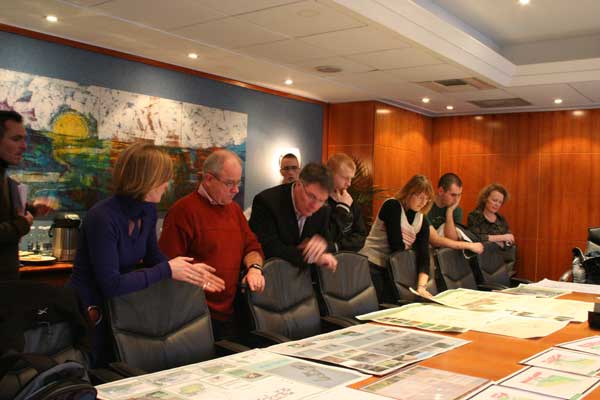
Dealing with real sites and clients are critical design skills. Here students present ideas for a courtyard space to a corporate board.

Learning to communicate in all media is fundamental to design and to the courses at SCD. LAN founder Scott Renwick is shown here presenting his ideas for a temporary urban art space.
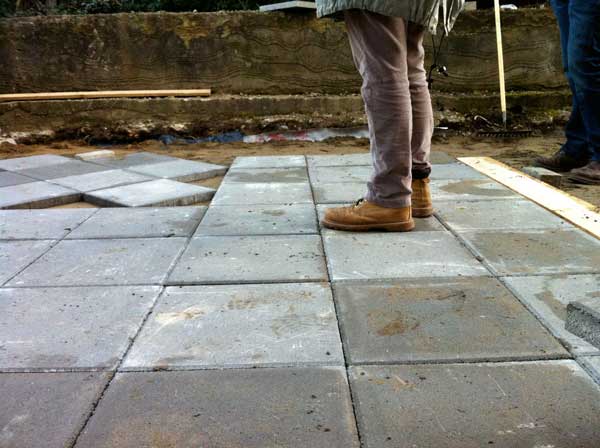
Good designers understand how things are made. Our reintroduction of practical instruction in building technology has been a huge success.
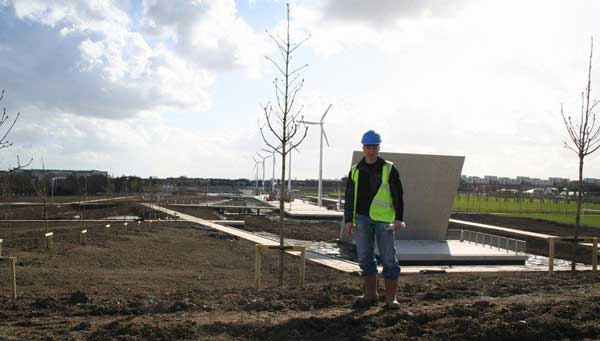
The ability to find and create work is hugely important for students. This image shows SCD graduate Ronan Byrne in Father Collins Park. Ronan was a graduate landscape architect who played a pivotal role in the parks installation for the internationally acclaimed urban park.
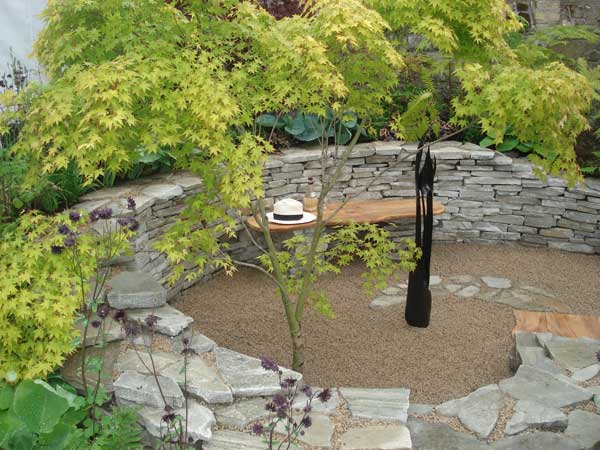
A shot of the award winning Bloom garden, Ar Ghairdin Cuil. The garden explored themes of Irish skills, craft, and plantsmanship and how great spaces require close collaboration.
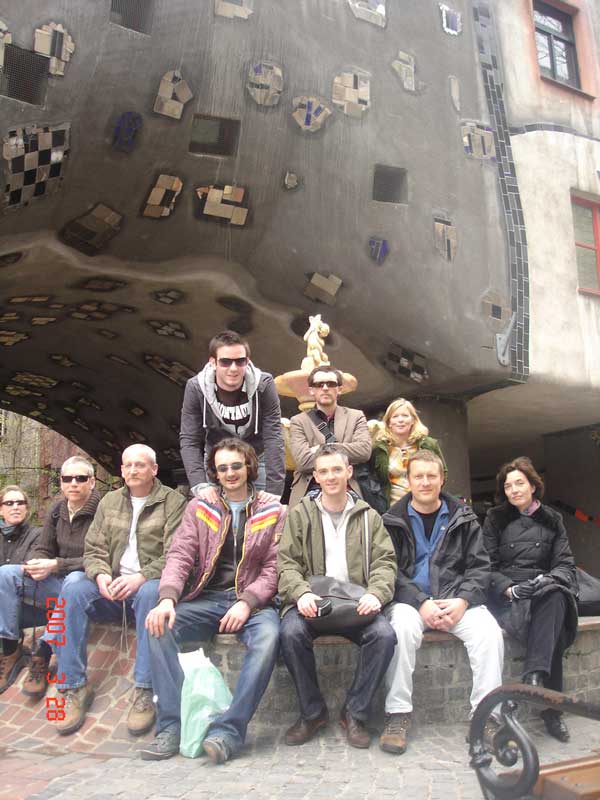
Experiencing real landscapes is a wonderful way to learn. Each year, SCD undertakes a study tour. The learning and craic are always mighty.
Another Face of Agriculture
In recent years one topic gains more and more popularity – agriculture in big cities and how it relates to landscape architecture. Today it is considered to play a critically important role in sustainable development and it covers all components of sustainability: economy, society and environment. Urban agriculture can be seen from very different perspectives and can take on very different forms. These include; community , collective , roof and private gardens; organic farming and farms serving local markets or even broader regional and national scales. It is increasingly recognised for its benefits to urban society. In time of crises and urbanization, we should ask ourselves if we can challenge what we take for granted, what we think is obvious and embrace a more creative point of view. Can we relocate the usual picture of the vegetable garden in the end of our backyard, hidden from the outside world and instead, put it in a public place. In a broader view, how can we promote agrarian land as an attractive and desirable place for recreation? To illustrate this, I would like to show a design from Shlomo Aronson Architects, a team of landscape architects, planners and architects from Israel and their project for Ben Gurion International Airport. What an exemplary model from a city that is ranked as one of the greenest in Israel. The airport is located 19 km southeast of Tel Aviv’s city center and is one of the biggest in the region. It is located in an agricultural area and the team takes advantage of this. The approach they use is to strongly integrate the airport to its surroundings of citrus groves and agricultural fields. The central garden is designed to remind visitors of its natural landscape features with its particular topography and man-made agricultural development. The vegetation is based on olive groves, grasslands and wheatfields, mixed with more typical planting such as palms. Of course, we need a water element to finish this unique piece of design. The different shapes and textures create the diversity needed for a good garden design. Thus, production and beauty are well combined and balanced. No one can argue that inspiration for garden designs can be found in agriculture. However, my aim is to encourage a broader use of that type of land. How can we integrate vast fields of agricultural lands and at the same time propose to urban society that it can be a place for recreation? One way is to present it as an aesthetic and cultural asset and put it on stage. Employ public infrastructure and create seating points and vistas. Belvedere Park, Cologne is a project that exemplifies such an approach. Vast fields of sunflowers, lavender, cole, vineyards and cherries. The list is as large as our imagination. One unexpected face of agriculture is Farmersgolf. Have you ever heard of it? It is a type of golf played in farmswith specific instruments found on farms. For example, a golf hole is made by placing a bucket on the ground and obstacles can include cows, ditches or barbed wire. The ball is much bigger than the usual golf ball and the head of the club is shaped like a shoe. ? It has been played since 1999 and is popular in Germany, France, Belgium and Sweden. It is the result of costly golf fees in the Netherlands and a test should be passed before being allowed to play. This is what we can call a return to nature. Agriculture nowadays has multiple functions that include the conservation of cultural heritage landscapes, agricultural and landscape recoursesand leisure, tourist and educational activities. Ranging from visits by school children, workshops on healthy eating and preparation of food, to more unconventional activities like Farmersgolf. Can you think of another creative way to use productive land in everyday life? Article written by Slavyana Popcheva
Dublin Urban Farm: Interview with Paddy O’Kearney
In the center of Dublin, on top of an old chocolate factory sits Ireland’s first urban farm. It is an oasis in progress, with a small brood of hens happily pecking through composting vegetables, high above Dublin city on a rooftop littered with various tiered planters entirely handmade. Most objects within the premise are up-cycled or recycled from pallets and various other materials that the group have scavenged.
Inside their eco-sanctuary are various methods of farming from their fish-tank aquaponics to their vast compost bins. Urban farming is the practice of sustainable development and sustainable food by producing food within the city limits, using recycled materials and being as ecological as possible. I met with eco- enthusiast Paddy O’Kearney, who talked me through the process of successfully running an urban farm and their aims for the future. “We came across this site [The Chocolate Factory] and it was pretty ideal essentially to develop the project itself. The project was officially launched in the middle of November, along with our FundIt campaign, aside from that we started construction, looking at materials and different ideas in development of the project itself around July”. “Essentially there is a major inertia around actually getting things like this done. Sustainability, food production and the things we can do with the resources at hand such as up-cycling pallets and generally keeping the aim of just being as sustainable as possible”. Aquaponics seems to be core to your project, could you explain that further? “It is the production of food using fish; essentially it is a mixture between agriculture and aquaculture, so basically, you are growing a certain amount of food from fish waste and sustaining the fish from a certain amount of food you are producing yourself. Its ramifications are far reaching in terms of closed vertical systems and developing food systems for an urban environment, which is pretty useful. Also, in situations like deserts and such, they are incredibly useful”. What was your biggest challenge? “Building it! We are looking to develop the project itself, it is currently still in development. Technically at this stage it is not an urban farm as of yet, it’s an urban farm in development. We are basically in the process of building it, managing our resources, managing our time properly, getting people to help us build it as well, so there are a lot of learning curves”. “In particular the manner in which we are developing materials and also due to the fact we are the first ones, we can’t just go to the next one and put questions to our cohorts, we’re the first ones (doing this) which means a lot of experimentation and a lot of learning”. What is the objective of urban farming and are you supplying services to the community at the moment? “As of yet, no because we are still constructing it, our primary focus is completion at the moment. Realistically speaking it is developing projects like this, it doesn’t mean you are going to be able to produce all the food for the city yourself, within the confines of the city but definitely a percentage”. “Overall if you were to use every supposed site within every city center, for the population living in cities, but the fact of the matter is that Dublin’s population density is nowhere near as high as London, New York or Paris, so I’d say for Dublin that figure would be much higher, between 25-30%, potentially, if you were to use brownfield sites, rooftops, balconies and lawns”. Do you think we as a country are reverting back to more agricultural roots? What demographics do you get? “I think it’s not just Ireland itself, it’s globally as well; you have different projects around the world. Primarily the focus is on sustainability and making sure we have a future and that we can minimize cost, insuring that there is less waste. The idea is basically anyone who is living in an urban environment, so anyone from school children, to teenagers, to people your own age, essentially anyone who has time, and, of course, older people as well. We are developing systems for basically everyone and anyone. With the urban farm that number [amount of people fed by urban farms] would be arbitrary; it is about developing as many sustainable systems as possible”. What is the future of urban farming in Ireland and what are your aims/goals for the Dublin Urban Farm? “The plan for the project and also my own (City Composting Ltd.) is to take up various other sites and develop them as the time goes by, train and develop the skills of individuals so they can go off and start their own projects, within and outside of Dublin and potentially consulting with corporates like Google or whomever wants to develop their own green image”. Well, urban farming may not be new; it is only a recent trend in Ireland. This project is only in its youth and as such offers a unique insight into how urban farms develop, the challenges facing them and the solutions utilized to allow the urban farm to thrive. This project is also a perfect example of how to make use of empty buildings and brownfield sites within our cities. With cities facing numerous problems (food, peak oil, climate change) the practice of urban farming will only grow in importance. Interview conducted by Lisa Tierney Dublin Urban Farm’s website: https://www.urbanfarm.ie/ Facebook Page: https://www.facebook.com/inspireorganics Fundit: https://www.fundit.ie/project/dublins-urban-rooftop-farm Enjoy what you’ve read! Support us and pick up one of our awesome T-shirts and hoodies today, Click the linkGardenia Fair – The Spring Fair
Gardenia Fair is traditionally held on the grounds of Poznan International Fair during the end of February, just before the horticulture industry comes to life in the spring. It replaced the National Horticulture Exhibition which took place in the autumn as a part of Polagra Fair Gardenia 2013 was the 7th edition organized in its current format. It has been growing steadily over the years – this spring it hosted over 500 exhibitors in 6 pavilions, occupying a total area of 32,000 square meters. This year Gardenia was run in conjunction with Animal Market (zoological fair), Rybomania (fishing fair) and Special Days which displays decorations for occasions such as Easter, Christmas and weddings. As always, a large proportion of the exhibits were taken up by various machines such as tractors, lawn mowers and irrigation systems. The inventive robotic lawn mower which does not need human assistance to do its job caught my attention. This technology might find customers among busy garden owners. The John Deere TANGO E5 autonomous mower won a Gold Medal at the Poznan International Fair.
Another big group of exhibitors were, as usual, plant nurseries and producers of seeds and other plant material. Due to it being early in the season, the stands lacked color and variety in comparison to the “Green is Life” Warsaw Exhibition. This has been true of previous editions as well. Exhibitors usually employ inventive methods of designing their stands to make up for the lack of flowers and greenery. This year the exhibits seemed strangely dull and unimaginative. Above all, the Vilmorin seed producer exhibit definitely stood out. They organized a brilliant cooking show. A professional cook presented the dishes prepared with vegetables grown from Vilmorin seeds. The spectators had the opportunity to sample the food. They were also offered a booklet with the recipes demonstrated and an example of a balcony design – a perfect solution for garden enthusiasts who are not fortunate enough to own a plot of land! Professionals use this opportunity to predict fashions in local landscape architecture and garden design for the upcoming year. The growing interest in green roofs and walls was clearly visible. Stone as garden decoration, ground cover or gabion walls was also much more present then in previous years. Speeches regarding the construction of green roofs, transition towns and plants used for urban green spaces were interesting and informative. Unfortunately, other talks seemed strangely similar to previous years. Gardenia did not lack attractions for visitors, especially amateur gardeners. It definitely does a great job promoting landscape architecture and horticulture. The local university held a special program titled “Design Emergency” for people who need help designing their gardens. There were lectures held in a show garden organized by OSTO (Polish Society of Garden Makers). The visitors had the opportunity to admire two design exhibitions; “Greenery in the City”comprised of the best works for a landscape architecture competition, and the “EKOOSIEDLA” “Eco-dwellings” competition. Some of the boards were of very high-quality – both visually and in terms of design. A few, however, were not worthy of being showcased at such an event. Gardenia is certainly growing. Every year it is taking up more space, there are more exhibitors and it attracts a larger number of visitors. I am just not entirely sure whether it is heading in the right direction, especially with the aforementioned side events such as Special Days or Rybomania. I would also like to see a fair intended only for landscape architecture and garden design students and professionals, free from tractors, lawn mowers, rabbits, Christmas baubles and dog food! Report written by Marta Ratajszczak Dates: February 22-24, 2013 Venue: Poznan International Fair Grounds, Poznan, Poland Organizer: Poznan International Fair Limited Tel.: +(48)-(61)-8692000 Enjoy what you’ve read! Support us and pick up one of our awesome T-shirts and hoodies today, Click the linkEcobuild 2013
Ecobuild is an event exhibition showcase for developers, companies, organisations and trusts involved in the construction, design, environment, planning and education sectors who have a strong focus on sustainability. Ecobuild took place this year from March 5th to 7th at the Excel Arena on London’s docklands. It has become the premier event in the UK for sustainable products and the construction industry, even rivaling those on mainland Europe. So what’s the point of Ecobuild?
- It’s a visitor exhibition where companies can showcase new sustainable, environmentally friendly products;
- It’s an event where organisations can launch new guidance documents and research papers on industry and environment;
- It is a Mecca for talks, workshops, lectures and seminars on the environment, urbanism, construction, sustainability, design and climate change;
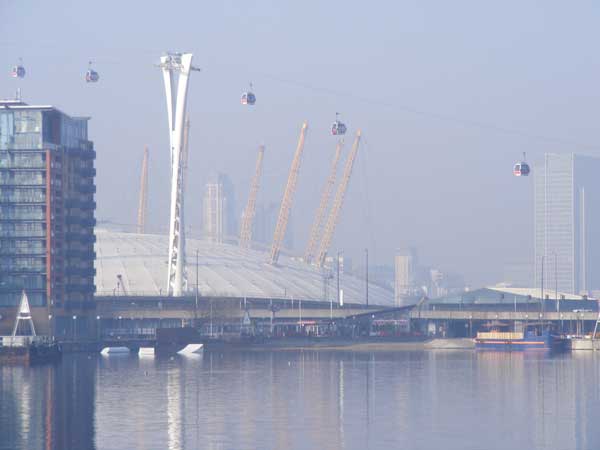
The London Docklands hosted Ecobuild this year, with the Millennium Dome in clear view from the venue
- Re-use of sites & materials
- Construction
- Social inclusion & empowerment
- Biodiversity
- Climate Change
- Green Infrastructure(GI)
- Water sensitive urban design (WSuD)
- Renewable Energy
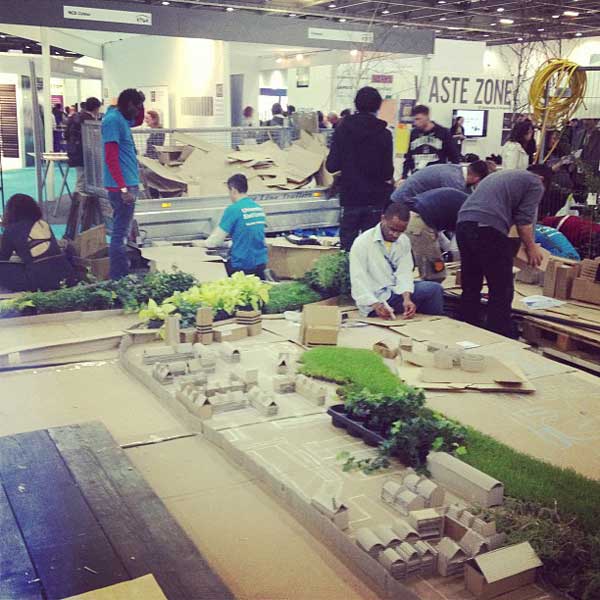
University of East London School of Architecture students building a representational model of the Canning Town Masterplan
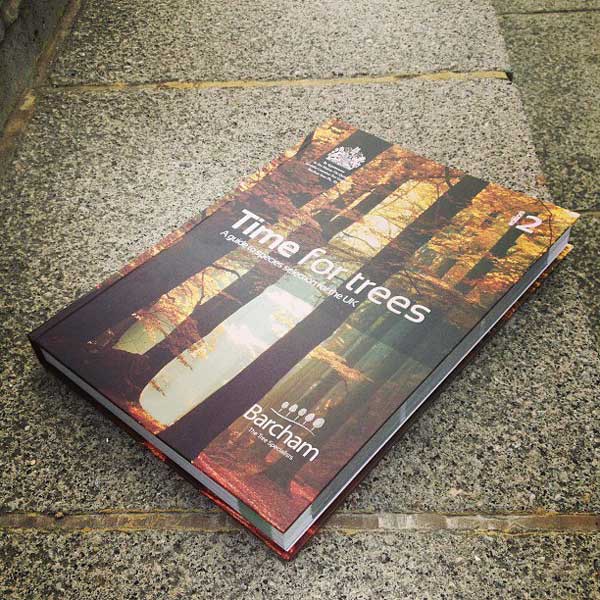
Barcham Trees were giving away free copies of this publication! Easily made them one of the most popular stands at Ecobuild 2013
Eurasian Amusement Parks And Attractions Expo 2013
Attendees at this year’s Eurasian Amusement Parks And Attractions Expo enjoyed a fun thrill ride of new products and leisure time possibilities.
The event, held Feb. 12-14 in Moscow, showcased the latest in amusement park and entertainment equipment, water parks, game rooms, playgrounds, and summer theme parks.
While not as big as some of the other major trade shows (in Berlin, London, and Orlando, Fla.), it offered European buyers a chance to explore what the industry’s best manufacturers and vendors have to offer. “Despite the fact that the show is not as big as in Orlando and London, its strong advantage is the fact that the visitors come here purposely – for the sake of the products, innovations, and fun,” said Andrew Rogonov, head of sales for GK Konstruktivnoe Biuro Tekhnologii. “Right from the morning, we had queues of the visitors and customers at our booth.”
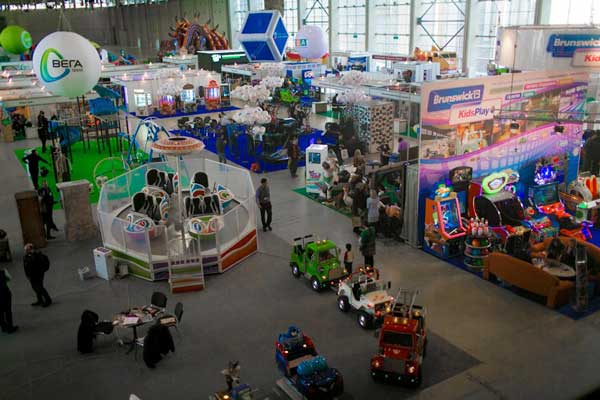
EAAPA 2013
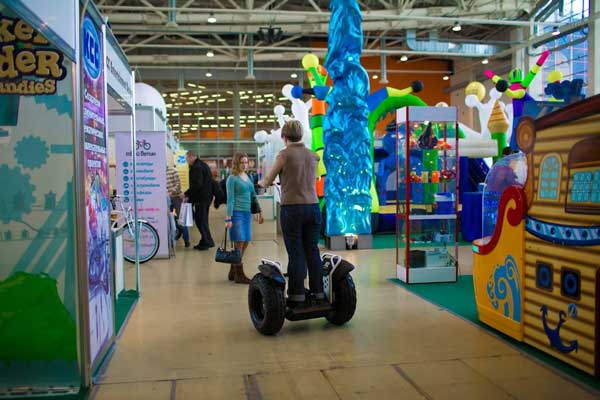
EAAPA 2013
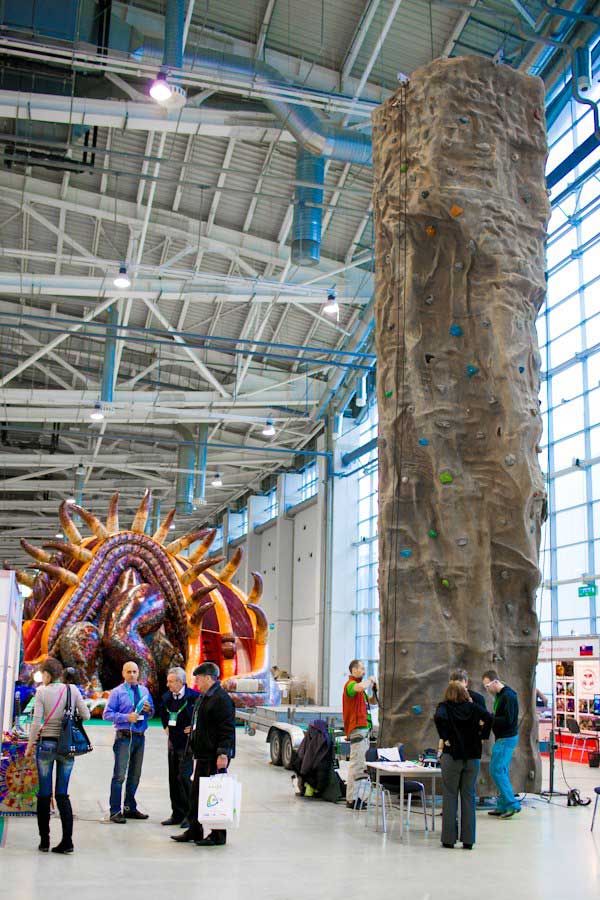
EAAPA 2013
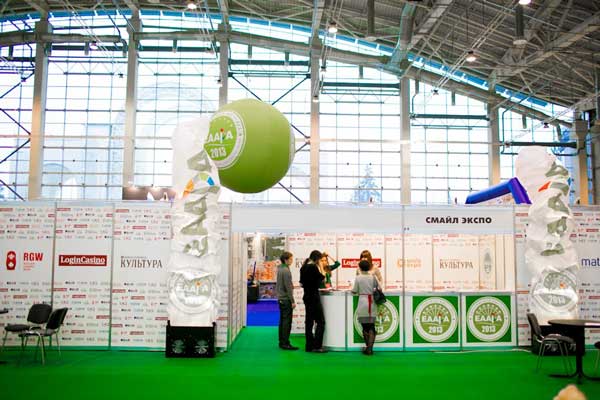
EAAPA 2013

EAAPA 2013

EAAPA 2013

EAAPA 2013
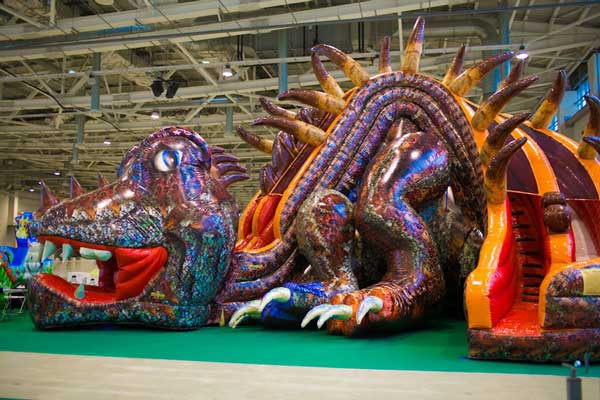
EAAPA 2013

EAAPA 2013


